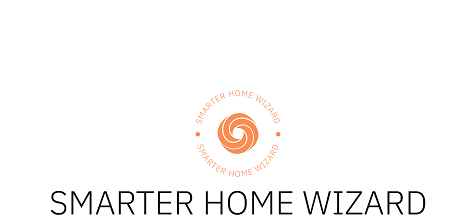In the world of smart homes, achieving seamless integration across various platforms is crucial for an optimized experience. By integrating your Google Nest Hub with Homebridge, you can unify control over all your smart devices, enabling complex automations and expanding compatibility. Imagine managing non-HomeKit devices through your Apple ecosystem, using Siri for voice commands, and creating sophisticated routines that streamline daily tasks. This comprehensive guide will walk you through the steps to connect Google Nest Hub with Homebridge, unlocking new levels of convenience and functionality in your smart home setup. Ready to elevate your home automation?
Introduction
The Google Nest Hub 🏠 is a smart display that integrates with Google Assistant, allowing you to control smart home devices, view photos, watch videos, and get weather updates, all through voice commands and a touchscreen interface. It serves as a central hub for managing your smart home ecosystem.
Homebridge 🔧 is an open-source server that enables the integration of non-HomeKit smart devices with Apple’s HomeKit ecosystem. By using Homebridge, you can control a wide range of smart devices through the Apple Home app and Siri, even if those devices are not natively compatible with HomeKit.
In today’s smart home landscape, integrating various devices into a seamless ecosystem is key to maximizing convenience and efficiency. One powerful combination is using the Google Nest Hub with Homebridge. This guide will walk you through the process, benefits, and tips for a successful integration. Let’s dive in! 🚀
Why Integrate Google Nest Hub with Homebridge? 🤔
Integrating Google Nest Hub with Homebridge offers several advantages:
- Unified Control: Manage all your smart devices from a single interface.
- Enhanced Automation: Create complex automations involving multiple devices.
- Voice Commands: Use Siri to control Google Nest devices.
- Expanded Compatibility: Connect non-HomeKit devices to your Apple ecosystem.
Getting Started: What You Need 🛠️
Before you begin, ensure you have the following:
- Google Nest Hub: The central device for your smart home.
- Homebridge Server: A computer or Raspberry Pi running Homebridge.
- Homebridge Plugin: The specific plugin for Google Nest integration.
- Apple Home App: For managing your HomeKit devices.
Step-by-Step Integration Guide 📋
1. Set Up Homebridge
First, you’ll need to set up Homebridge on your server. Follow these steps:
- Install Node.js: Homebridge requires Node.js. Download and install it from the official website.
- Install Homebridge: Open your
terminal and run the command
npm install -g homebridge. - Configure Homebridge: Create a configuration file (config.json) with your device details.
2. Install the Google Nest Plugin
Next, install the Homebridge plugin for Google Nest:
- Find the Plugin: Search for
homebridge-google-nest-sdmon the Homebridge plugin repository. - Install the Plugin: Run the command
npm install -g homebridge-google-nest-sdm. - Configure the Plugin: Add the plugin
configuration to your
config.jsonfile.
3. Link Google Nest to Homebridge
Now, link your Google Nest Hub to Homebridge:
- Create a Google Cloud Project: Go to the Google Cloud Console and create a new project.
- Enable APIs: Enable the Smart Device Management API for your project.
- Generate Credentials: Create OAuth 2.0 credentials and download the JSON file.
- Configure Homebridge: Add the credentials to your Homebridge configuration.
4. Add Devices to Apple Home App
Finally, add your Google Nest devices to the Apple Home app:
- Open the Home App: On your iPhone or iPad, open the Apple Home app.
- Add Accessory: Tap the “+” icon and select “Add Accessory”.
- Scan the QR Code: Scan the Homebridge QR code to add your devices.
Tips for a Smooth Integration 📝
- Keep Software Updated: Ensure Homebridge, plugins, and your devices are running the latest software versions.
- Backup Configurations: Regularly backup your Homebridge configuration file.
- Monitor Performance: Use the Homebridge UI to monitor device performance and logs.
- Join Communities: Participate in Homebridge and Google Nest forums for support and tips.
Conclusion 🎉
Integrating Google Nest Hub with Homebridge opens up a world of possibilities for your smart home. With unified control, enhanced automation, and expanded compatibility, you can create a truly connected home environment. Follow this comprehensive guide to get started and enjoy the benefits of a seamlessly integrated smart home. Happy automating! 🏠✨
Affiliate Disclaimer
This site contains affiliate links, which means that we may receive a small commission, at no cost to you, if you make a purchase through a link. We only promote products or services that we use personally and believe will add value to our readers. Please read our full disclosure policy for more information. Thank you for supporting our site!



